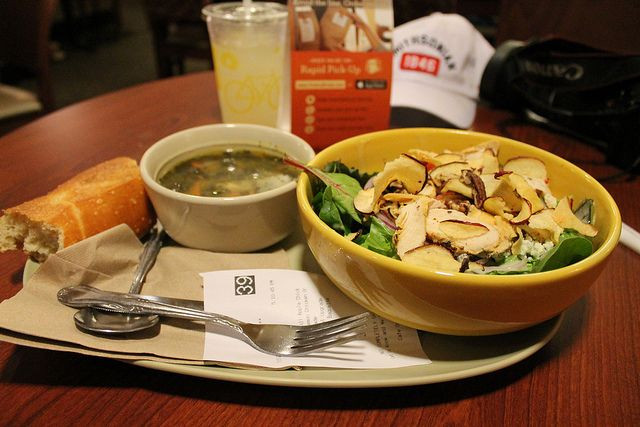Panera Bread Removes Over 150 Artificial Ingredients From Its Menu, But Not All Of Them Are Bad

Panera is taking a page from Chipotle and Tyson Foods and removing about 168 artificial ingredients from its menu, Fortune reported. To be fair, the restaurant chain first announced it was working toward this change, as well as making a more positive impact on the food system, back in 2014.
Ron Shaich, founder and CEO of Panera, told Fortune him and his team, “are increasingly aware and focused on what is in our food and ridding ourselves of a lot of chemical additives.” The New York Times added this is Shaich’s way of “drawing a line in the sand” and making it easier for consumers to eat clean. Consumers can download Panera's “No No List” of the exact preservatives, sweeteners, and flavors it's working to eliminate.
Caffeine and propylene glycol (liquid sweetener) are two of the ingredients on Panera’s sort-of blacklist. Yet, from a scientific perspective, neither of these ingredients has proven to be unsafe. The Atlantic made a similar point regarding aspartame following Pepsi’s announcement to remove the ingredient from Diet Pepsi. In which case, if restaurants don't have the science to back up their decisions, is it food that’s the problem — or is it what consumers consider to be healthy? Is Panera’s artificial-free menu simply a publicity stunt?
The opinion of registered dietician Abby Langer, of Abby Langer Nutrition in Toronto, is it’s 70/30: 70 percent PR stunt and 30 percent Panera’s desire to clean up its menu. While caffeine and propylene glycol don’t get a bad rap, other blacklisted ingredients, like HFCS and trans fat, do; in which case, Langer approves Panera’s decision to remove them. But, she explained to Medical Daily in an email, removing ingredients that haven’t proven unsafe fuel consumer “fear of ingredients they can’t pronounce.”
“Panera seems to be playing off the ‘clean eating’ trend that’s prominent now,” Langer said. “Many of the items at Panera, like their 850-calorie grilled cheese, will still be unhealthy long after any offensive (or not) ingredients are removed from it.”
Eating clean refers to consumers who limit as many processed foods (sometimes also meat and dairy) from their diet as possible. Clean eaters source more whole foods into their diet, from fresh fruit and vegetables to whole grains. And to be clear, Langer believes sourcing cleaner ingredients, as well as a restaurant’s willingness to be transparent is a positive; it can just be tricky.
“It’s good that Panera is taking out unnecessary ingredients from their food, but don't let that fool you into thinking that their menu is any healthier because overall it's not,” Langer said. “Switching from HFCS to sugar is 'shuffling the deck chairs,' and there are still plenty of poor choices on their menu.”



























